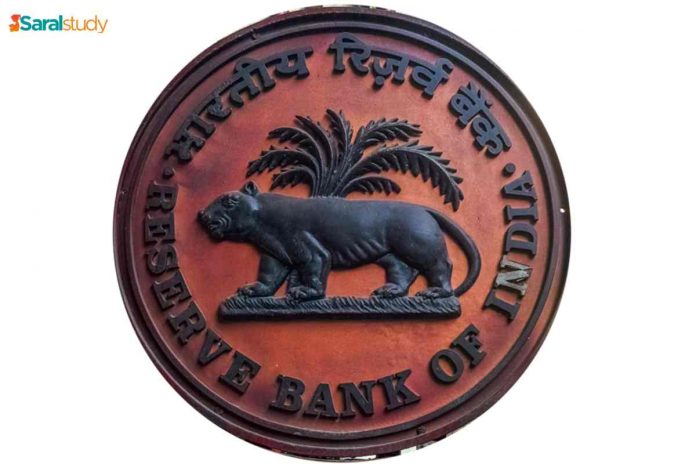The Reserve Bank of India controls all monetary policies related to the national currency. The reserve Bank of India’s primary functions is issuing currency, sustaining monetary stability in India, operating the currency, and maintaining the country’s credit system. The Reserve Bank of India is a vital member of the International Monetary Fund or IMF. As of October 2021, the Governor of RBI is Mr. Shakti Kanta Das. He is the 25th RBI governor. The Reserve Bank of India, or RBI, was originally privately owned. It has been under the ownership of the Ministry of Finance since its nationalization in 1949.
About RBI
The strategies formulated by Dr. BR Ambedkar in his book named “The Problem of The Rupee it’s Origin and Solution” served as a base for the concept of The Reserve Bank of India. This central banking institution was established based on the suggestions of the Royal Commission on Indian currency and finance in 1926. This Commission was also known as the Hilton Young Commission. The Reserve Bank of India became a member Bank of the Asian clearing union after it was nationalized in 1949. RBI regulates the credit and currency system in India. Maintaining the confidence of the public in the system, protecting the interest of the depositors, and offering cost-effective banking services like cooperative banking and commercial banking to the people are the chief objectives of the Reserve Bank of India.
The Timeline of RBI
- 1934- The British enacted the Reserve Bank of India Act.
- 1935- The Reserve Bank of India was established on April 1st in Calcutta.
- 1937- The Reserve Bank of India was permanently moved to Mumbai.
- 1949- After being held by stakeholders, the bank got nationalized after independence.
The Preamble of the RBI
The preamble of RBI explains its primary functions:
“To regulate the issue of Bank notes and keeping of reserves to secure monitor stability in India and generally to operate the currency and credit system of the country to its advantage.”
Functions of the Reserve Bank of India
Being a central bank, RBI serves a significant role in regulating the country’s financial transactions. Some of them are:
- The monetary authority
- Implements monetary policies
- Monitors the monetary policy
- Ensuring price stability while considering the economic growth of the country
- Regulator and administrator of the financial system
-
- The RBI determines the comprehensive parameters of banking operations.
- Methods such as license issuing, liquidity of assets, Bank mergers, branch expansion, etc., are responsible for the functioning of the country’s banking and financial system.
- Managing foreign exchange
-
- Forex reserves of India a managed by the RBI.
- It is responsible for maintaining the value of the Rupee outside the country.
- It Aids foreign trade payments.
- Issuer of Currency
-
- Providing the public with sufficient supplier currency notes and coins is the Reserve Bank of India’s responsibility.
- The RBI also takes care of the quality of currency notes and coins.
- RBI is in charge of showing an exchange of currency and coins.
- Destroying the currency and coins unsuitable for circulation is also RBI’s job.
The Reserve Bank of India’s development role
In a developing country like India, RBI has to perform various developmental functions in addition to routine operations. These functions are country-specific and change accordingly. Some of these functions are:
- RBI organizes promotional functions that support National objectives and encourage rural and agricultural economic development.
- RBI will regularly issue directives to commercial banks to lend loans to small-scale industrial units.
Composition of RBI
RBI has vitally essential responsibilities. To make the functioning smooth, it is composed of the following:
- The Central Board of directors controls the Reserve Bank of India. The directors are appointed for 4 years by the government of India.
- The Central Board consists of a Governor, 4 Deputy Governors, 2 Finance Ministry Representatives, and 4 Directors representing local boards headquartered in Mumbai, Kolkata, Chennai, and New Delhi.
- The executive head of the Reserve Bank of India is the Governer
- The first governor of RBI was Sir Osborne Smith, and the first Indian Governor of RBI was Mr.CD Deshmukh.
- Mr. KJ Udeshi was the first woman Deputy Governor of RBI.
- Mr. Manmohan Singh was the only Prime Minister who had also been the Governor of the RBI.
- The current Governor of RBI is Mr. Shaktikanta Das.
Rates and Ratios of RBI
As of January 15th, 2015, the rates are:
- Bank rate of 8.75%
- Repo rate 7.5 0%
- The reverse repo rate is 6.75%
- The cash reserve ratio of 4%
- Statutory liquidity ratio 21.5 0%
- Base rate 10.00% to 10.25%
- Savings deposit rate of 4%
- Term deposit rate of 8% to 9%
FAQ
Q1. How many reserve banks are there in India?
Ans. India has only one Reserve Bank or Central Bank, the Reserve Bank of India.
Q2. What does the RBI logo mean?
Ans. The RBI logo reminds and symbolizes the government’s status and links to the country. Its independence and separation of the RBI from the government. RBI wanted the seal to have something Indian in the design and emphasize the government status of the bank but not too closely.
Q3. What animal is the RBI logo?
Ans. The official emblem of The Reserve Bank of India is a palm tree and a tiger, which in many ways is your vestige of the colonial past and derived from the seal of the East India Company and mohar, which depicted a lion and a palm tree. Due to tigers being widespread in the country during that time, they hold cultural significance like no other species.
Q4. Who owns RBI?
Ans. originally, it was privately owned, but since independence, it has been nationalized in 1949.
Q5. How many branches of RBI are there in India?
Ans. RBI has four zonal offices and 19 regional offices.

